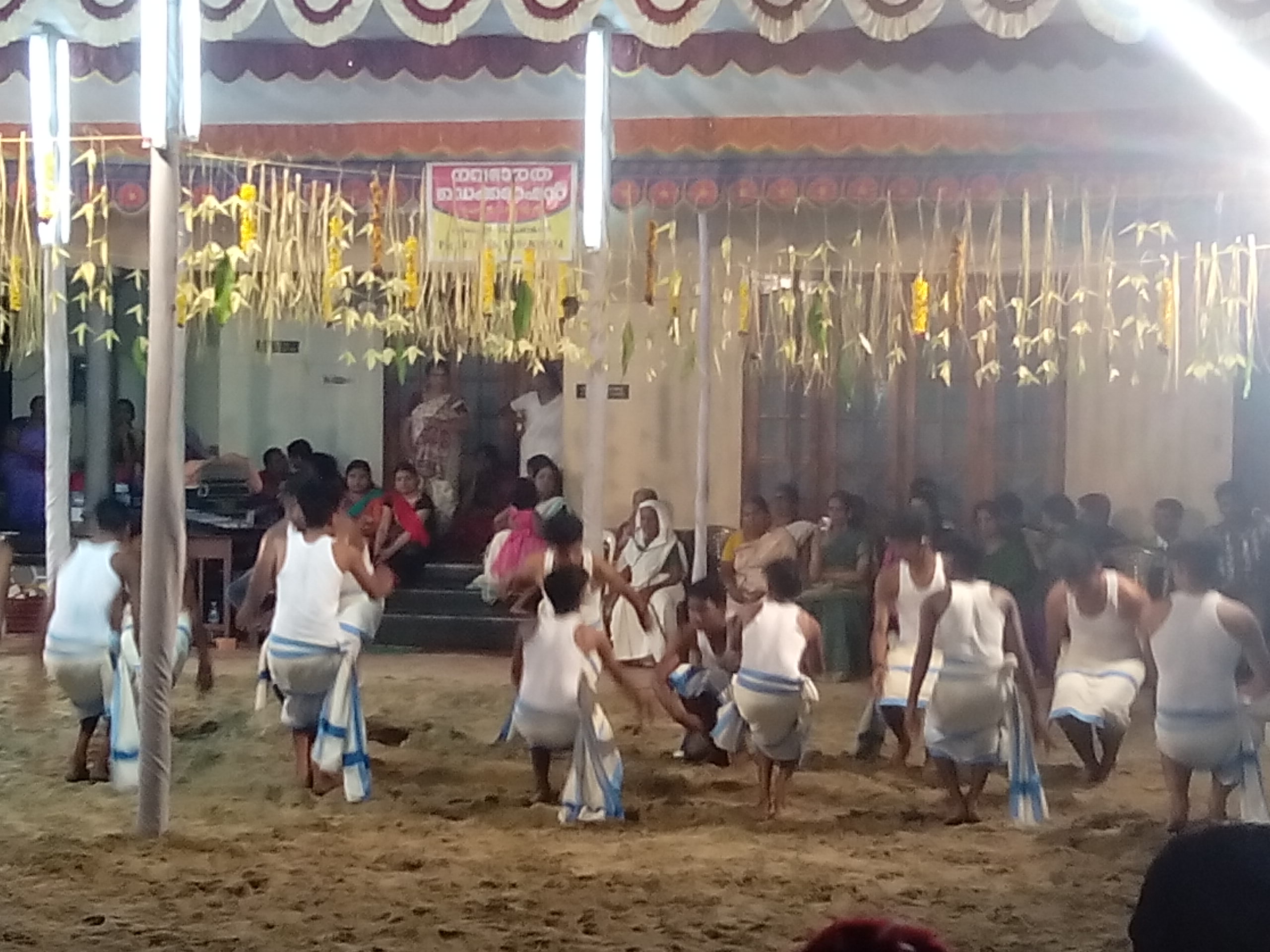Kuthiyottam on:
[Wikipedia]
[Google]
[Amazon]
 ''Kuthiyottam'', sometimes spelled Kutiyottam, is a ritual youth dance, and in some cases of mock blood sacrifice, found at annual Pongala festival celebrations at some
''Kuthiyottam'', sometimes spelled Kutiyottam, is a ritual youth dance, and in some cases of mock blood sacrifice, found at annual Pongala festival celebrations at some What is the Kuthiyottam ritual and why is it in the news?
''The Hindu'' (2 March 2018)
 ''Kuthiyottam'', sometimes spelled Kutiyottam, is a ritual youth dance, and in some cases of mock blood sacrifice, found at annual Pongala festival celebrations at some
''Kuthiyottam'', sometimes spelled Kutiyottam, is a ritual youth dance, and in some cases of mock blood sacrifice, found at annual Pongala festival celebrations at some Hindu
Hindus (; ) are people who religiously adhere to Hinduism. Jeffery D. Long (2007), A Vision for Hinduism, IB Tauris, , pages 35–37 Historically, the term has also been used as a geographical, cultural, and later religious identifier for ...
temples in Kerala
Kerala ( ; ) is a state on the Malabar Coast of India. It was formed on 1 November 1956, following the passage of the States Reorganisation Act, by combining Malayalam-speaking regions of the erstwhile regions of Cochin, Malabar, South Ca ...
dedicated to Bhadrakali
Bhadrakali (IAST: Bhadrakālī; ), also known as Mahakali and Kali, is a Hindu goddess.
According to Shaktism, she is one of the fierce forms of the Supreme Goddess Shakti, or Adi Parashakti, mentioned in the Devi Mahatmyam. In Vaishnavi ...
or Durga
Durga ( sa, दुर्गा, ) is a major Hindu goddess, worshipped as a principal aspect of the mother goddess Mahadevi. She is associated with protection, strength, motherhood, destruction, and wars.
Durga's legend centres around c ...
– a warrior goddess. This ritual features volunteer teenage or younger boys who live under austere conditions over the festival period in the Malayalam calendar month of Kumbham. They wear ascetic clothes, abstain from meat and eat simple food, participate in daily prayers in the temple. They also dress up in ceremonial clothes and perform as singers and dancers under the guidance of an ''asan'' (conductor). These dances are synchronized with the legends of the goddess. These dances are highly energetic, paced to the beat of drums, with singers and feature traditional costumes.
In some ''Kuthiyottam'' dances and processions, such as at the Bhadrakali temples of Alappuzha, Kollam, and Thiruvananthapuram districts of Kerala, the dance make up for the boys includes either symbolic blood or real blood from the piercing of their skin. The link with blood is believed by the kuthiyotta troups are symbolizing the wounded soldiers of the goddess. The boys are typically from high castes(Nair)
of Kerala, and some scholars have speculated such ''Kuthiyottam'' practices as having roots in "mock human sacrifice" practice of ancient Kerala. The piercing and blood-related rituals are controversial within Kerala, with officials demanding that they be banned under India's prevention of child abuse laws.''The Hindu'' (2 March 2018)
See also
*Flagellant
Flagellants are practitioners of a form of mortification of the flesh by whipping their skin with various instruments of penance. Many Christian confraternities of penitents have flagellants, who beat themselves, both in the privacy of their dw ...
– a Christian tradition of self-mortification
*Muharram
Muḥarram ( ar, ٱلْمُحَرَّم) (fully known as Muharram ul Haram) is the first month of the Islamic calendar. It is one of the four sacred months of the year when warfare is forbidden. It is held to be the second holiest month after ...
– a Shia Muslim tradition of mourning processions with flagellation, body-cutting
*Thaipusam
Thaipusam or Thaipoosam (Tamil language, Tamil: தைப்பூசம், ''taippūcam'' Wikipedia:Naming conventions (Indic), ?), is a festival celebrated by the Hindu Tamil people, Tamil community on the full moon in the Tamil calendar, T ...
– Tamil festival tradition dedicated to Murugan with processions, body-piercing
References
Dances of Kerala {{Kerala-stub